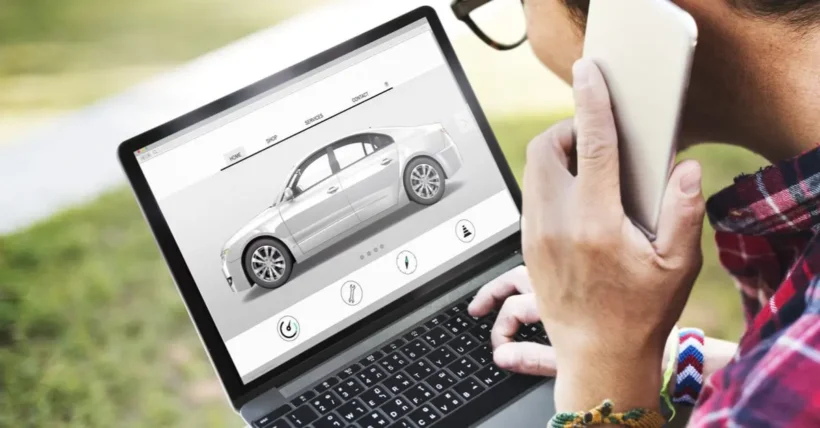Welcome to our comprehensive guide on how to sell your car to a dealership. This process, often perceived as complex, can be straightforward and beneficial with the right information. Selling to a dealership saves time and hassle compared to private sales, offering immediacy in transactions and eliminating the need for advertising and dealing with potential buyers. Our aim is to demystify each step, ensuring a smooth and successful experience for those considering this option.
Amass Crucial Documentation

The foundation of a successful car sale to a dealership lies in gathering the necessary paperwork. Essential documents include your car’s title, which establishes your legal ownership; the registration, verifying the car’s compliance with state regulations; and detailed maintenance records, which add credibility to the car’s history and condition. These documents are indispensable as they provide the dealership with crucial information, aiding in a swift and fair valuation of your car. Missing paperwork can delay or derail the process, so ensuring everything is in order is a vital first step.
Whip Your Car into Shape
The condition of your car significantly influences the dealership’s offer. A clean, well-maintained vehicle can command a higher price. Invest time in thoroughly cleaning both the interior and exterior, as a spotless appearance suggests careful ownership, potentially boosting its value. Pay attention to details: polish the exterior, clean the windows, vacuum the seats and carpets, and remove any personal items and trash. This step is about more than just making your car look good; it’s about presenting a vehicle that appears well-cared-for and ready for resale. If you want to learn more about preparing your car for sale, read more.
Valuing Your Car for Selling or Trading

Before approaching a dealership, it’s crucial to understand your car’s market value. Research its worth using reliable online valuation tools, considering factors like make, model, year, mileage, and condition. This research sets a realistic expectation for what you can expect to receive and strengthens your position in negotiations. Remember, dealerships aim to buy low and sell high, so having a clear idea of your car’s value helps in ensuring you get a fair deal. It’s also wise to consider any recent repairs or upgrades that might enhance the car’s value in your assessment.
Shop Around at Various Dealerships
Exploring options is key to getting the best deal. Visit multiple dealerships to understand the market better and leverage competitive offers. Each dealership may value your car differently based on their current inventory needs and market trends. By comparing offers, you gain insight into your car’s market demand. Approach each visit as a learning experience, taking notes on the offers and feedback received. This step not only maximizes your potential sale price but also equips you with negotiation insights and a clearer understanding of the market.
Get a Professional Car Appraisal
The appraisal is a critical step where the dealership assesses your car’s condition and value. This process typically involves a thorough inspection of the car’s exterior and interior, as well as a mechanical check-up. The dealership’s appraiser will consider factors such as the car’s make, model, age, mileage, and maintenance history. Understanding this process and the factors influencing your car’s appraisal can help set realistic expectations and prepare you for the dealership’s offer.
Securing a More Favorable Price

Negotiation is where knowledge and preparation pay off. Armed with your research on your car’s value and competing offers, you can negotiate with confidence. Be open to the dealership’s initial offer, but don’t hesitate to counteroffer if it falls short of your expectations. Effective negotiation involves clear communication, understanding your car’s worth, and being prepared to walk away if the offer is too low. Remember, the goal is to strike a balance where both you and the dealership feel satisfied with the deal.
Review the Offer and Its Stipulations
Once you receive an offer, it’s crucial to review it carefully. Pay attention to the details, including the sale price, any additional fees, and the terms of the transaction. Dealerships may include various fees or terms that affect the final amount you receive. Understanding these details ensures there are no surprises and helps you make an informed decision. Don’t hesitate to ask questions or seek clarification on any aspect of the offer that isn’t clear.
Address Vital Paperwork
Finalizing the sale involves completing various paperwork, ensuring the legal transfer of the car to the dealership. This includes signing a bill of sale, transferring the title, and handling any state-specific documentation. It’s vital to ensure all paperwork is accurately completed and reflects the agreed terms. Accurate documentation not only protects you legally but also ensures a seamless transfer process. Double-check all details and keep copies of all documents for your records.
Finish the Sales Process

The final step in selling your car to a dealership is signing the necessary paperwork and receiving payment. The mode of payment may vary, ranging from direct deposit, check, or even trade-in credit if you’re planning to purchase another vehicle from the dealership. Ensure that all agreed terms are met before signing the final documents. It’s also important to understand any post-sale obligations you may have, such as providing additional paperwork or accessories related to the car.
Take Away Personal Belongings
Before handing over your car, take the time to remove all personal items. This includes items in the glove compartment, trunk, under seats, and any add-ons like phone holders or GPS devices. Ensuring that you’ve removed all personal belongings not only protects your privacy but also helps in transitioning the car for its next owner. It’s a simple but crucial step in finalizing the sale process.
Bottom Line
Selling your car to a dealership can be a straightforward and beneficial process when approached with the right knowledge and preparation. By following these steps – from gathering documents and preparing your car, to negotiating and completing the sale – you can ensure a smoother, more successful transaction. Use this guide as your roadmap to navigate the process with confidence and ease, ultimately making your car selling experience a positive one.

